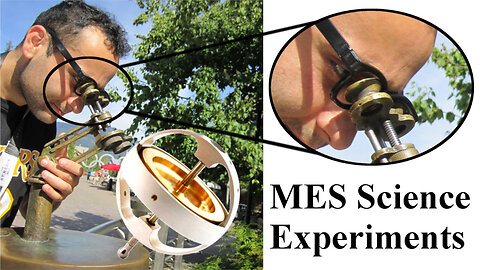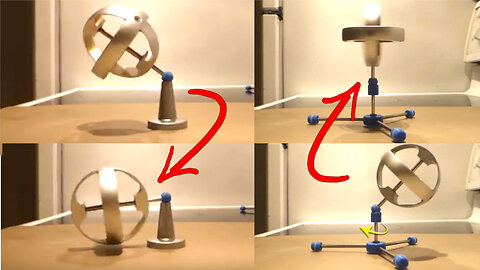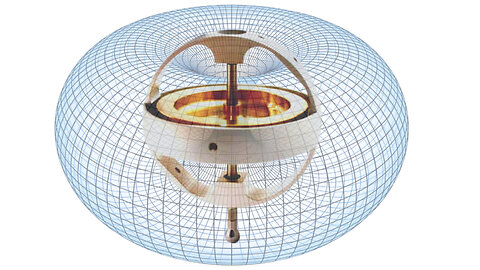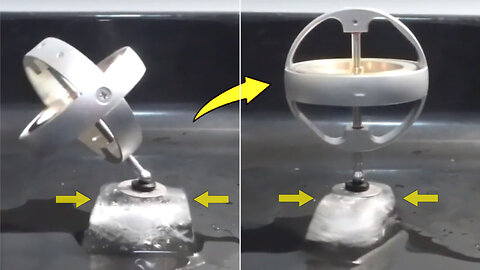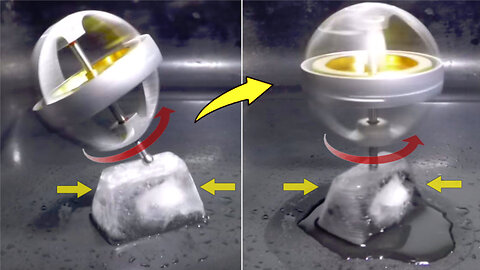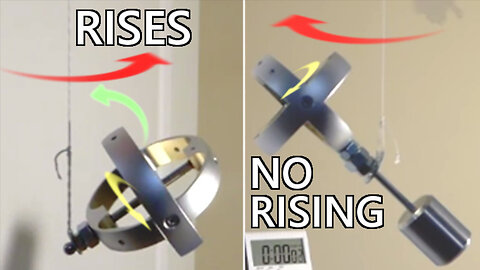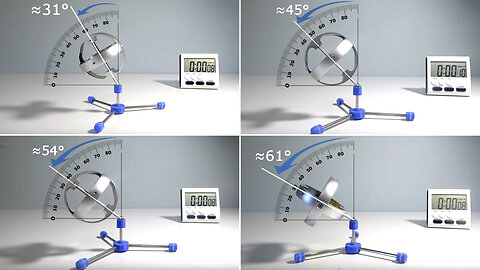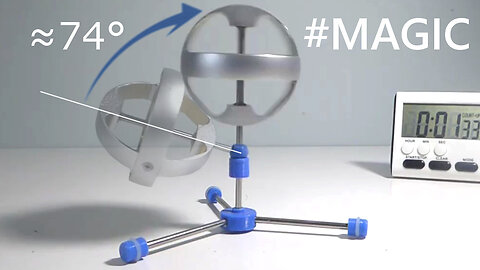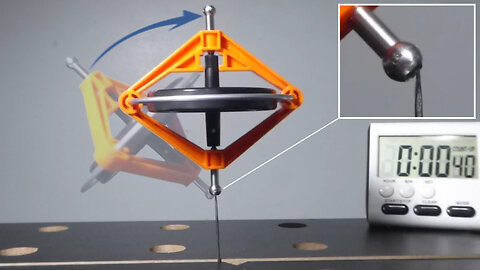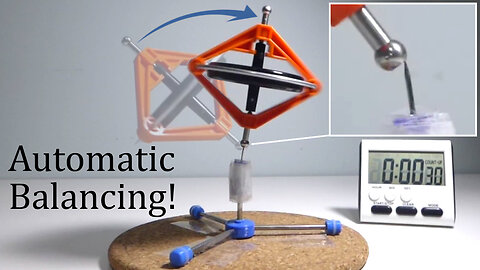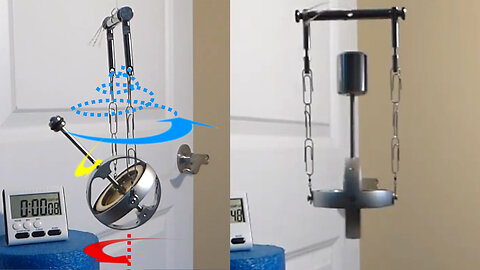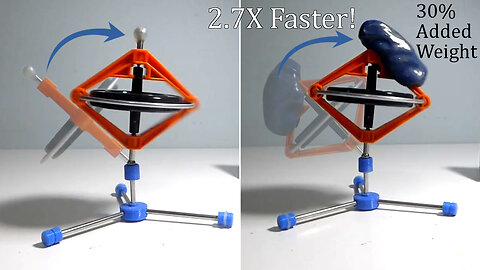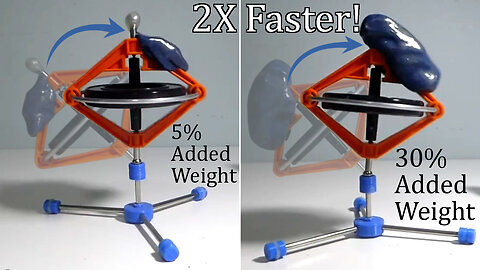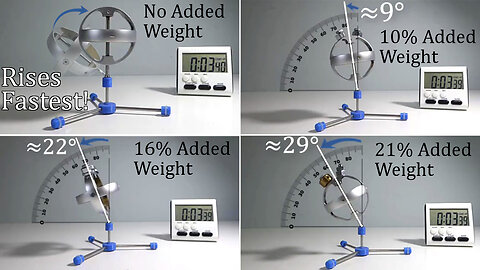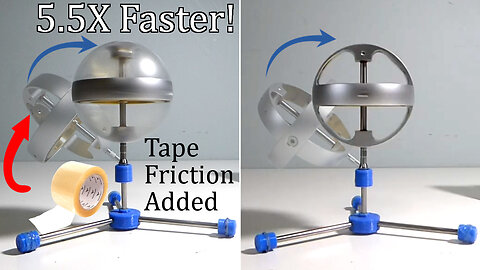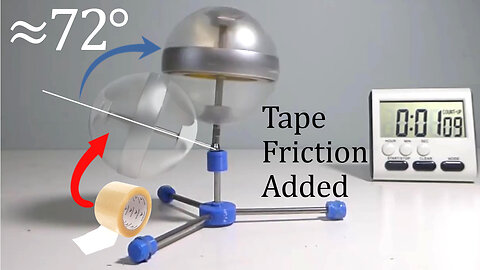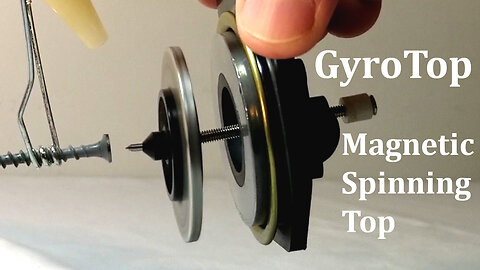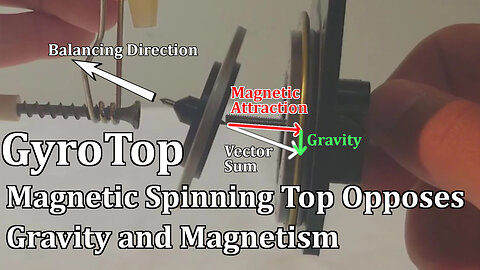🔬#MESExperiments - Introduction to MES Science Experiments!
🔬#MESExperiments 1: Gyroscopes Precess Upwards on Low Friction & Rotating Surfaces
🔬#MESExperiments 2: Super Precision Gyroscope Precesses Upwards Even at Very Steep Angle
🔬#MESExperiments 3: Gyroscopes Exert 'Inertial Forces' With Zero Loss of Spin Rate
🔬#MESExperiments 4: Gyroscopes Precess with Zero ‘Angular Momentum’
🔬#MESExperiments 5: Gyroscopes Precess Upwards on Ice with Zero Centripetal Force
🔬#MESExperiments 6: Gyroscopes Precess with Zero Centripetal Force on Ice Even at Horizontal Angle
🔬#MESExperiments 7: Gyroscopes Precess Upwards on Ice Even While Outer Casing Spins
🔬#MESExperiments 8: Large Gyro Wheel Precesses at 1000X Torque Over-Unity
🔬#MESExperiments 9: Gyroscope With Counterweight Hung on a String Rises 'DOWNWARDS'!
🔬#MESExperiments 10: Gyroscopes on a String Can Rise But Not if Sufficient Counterweight is Added
🔬#MESExperiments 11: Increasing Gyroscope Spin Speed Doesn't Necessarily Increase Rising Rate
🔬#MESExperiments 12: Gyroscopes at Steeper Angles Usually Means Exponentially Longer Rising Times
🔬#MESExperiments 13: Steepest Gyroscope Rising Experiment Ever! 74 Degrees from the Vertical
🔬#MESExperiments 14: Angle of Gyroscope Has Little Effect on Rate/Period of Precession
🔬#MESExperiments 15: Gyroscopes Tend to Rise Until Precession Rate Has Peaked #Interesting
🔬#MESExperiments 16: Gyroscopes Can Even Rise on the Tip of a Thin Needle!
🔬#MESExperiments 17: Gyroscopes Can Even Rise on a Slanted Needle
🔬#MESExperiments 18: Gyroscopes Even Rise on a Flimsy Rotating Needle
🔬#MESExperiments 19: A Gyroscope is an Inverted Pendulum Without Electronic Sensors
🔬#MESExperiments 20: Forced Precession of a Gyroscope Generates Inertial Lift (i.e. Weight Loss)
🔬#MESExperiments 21: Added Weight Can Make a Gyroscope Rise Faster
🔬#MESExperiments 22: Added Weight Can Make a Gyroscope Rise Faster (No Casing Rotation)
🔬#MESExperiments 23: Added Weight Doesn’t Always Make Gyroscopes Rise Faster #Nuance
🔬#MESExperiments 24: Gyroscope Rises Even With 70% Added Weight #Amazing
🔬#MESExperiments 25: Increasing Spin Friction Can Make Gyroscopes Rise Much Faster
🔬#MESExperiments 26: Increasing Spin Friction Can Make a Gyroscope Rise from a Very Steep 72° Angle
🔬#MESExperiments 27: Spin Friction Can Make Gyroscope Rise from Steep 70° Angle (No Casing Rotation)
🔬#MESExperiments 28: Magnetic Spinning Top Aligns Opposite of Magnetic Attraction
🔬#MESExperiments 29: Magnetic Spinning Top Aligns Opposite of Asymmetric Magnetic Attraction
🔬#MESExperiments 30: Magnetic Spinning Top Aligns Opposite of Both Gravity and Magnetic Attraction
🔬#MESExperiments 31: Mechanical Demonstration of Inertia by Francis McCabe
🔬#MESExperiments 32: Comparing Tippe Top, Phi Top, and Gyroscope Rising Tests
🔬#MESExperiments 12: Gyroscopes at Steeper Angles Usually Means Exponentially Longer Rising Times
In #MESExperiments 12 I demonstrate the observation which usually happens when comparing a gyroscope’s rising time with the initial angle at which it is placed; and is that the rising time tends to increase exponentially as the angle is made even steeper. I demonstrate this by comparing the same gyroscope at 4 different angles: 31°, 45°, 54°, and 61°. In each test the gyroscope was spun up with the same power drill and I made sure to compare the gyroscope experiments in which the total time before falling were similar; thus, ensuring that the initial spin speeds as well as the overall gyroscope setup were comparable for each test.
The results of the experiment are tabulated and graphed in the spreadsheet which can be downloaded in this link: https://1drv.ms/x/s!As32ynv0LoaIh-9pOLwowdYSDqPYVA. The 31° gyro rose in 70 seconds, the 45° in 140 seconds, the 54° in 217, and the 61° in 337 seconds. The resulting automated exponential “Trendline” from Microsoft Excel gives the following exponential equation and which matches the data well.
y = 13.863 e^(0.0517x)
Effectively, increasing the angle by approximately double from 31° to 61° results in nearly 5 times the rising time (337/70 = 4.814 ≈ 5).
For full results and data regarding each of the 4 tests performed as well as links to the original unmerged videos, make sure to go over the Hive notes regarding this experiment: https://peakd.com/mesexperiments/@mes/mesexperiments-12-gyroscopes-at-steeper-angles-usually-means-exponentially-longer-rising-times
Note that this gyroscope is the same one used in #MESExperiments 11 and thus had a weight including the stem of 150.68 grams: https://peakd.com/mesexperiments/@mes/mesexperiments-11-increasing-gyroscope-spin-speed-doesn-t-necessarily-increase-rising-rate
Stay Tuned for #MESExperiments 13…
Related Videos:
#MESExperiments Video Series: https://mes.fm/experiments-playlist
DRAFT #MESExperiments Video Series: https://mes.fm/experiments-draft
#AntiGravity Video Series: https://mes.fm/antigravity-playlist
#FreeEnergy Video Series: https://mes.fm/freeenergy-playlist .
------------------------------------------------------
SUBSCRIBE via EMAIL: https://mes.fm/subscribe
DONATE! ʕ •ᴥ•ʔ https://mes.fm/donate
Like, Subscribe, Favorite, and Comment Below!
Follow us on:
MES Truth: https://mes.fm/truth
Official Website: https://MES.fm
Hive: https://peakd.com/@mes
MORE Links: https://linktr.ee/matheasy
Email me: contact@mes.fm
Free Calculators: https://mes.fm/calculators
BMI Calculator: https://bmicalculator.mes.fm
Grade Calculator: https://gradecalculator.mes.fm
Mortgage Calculator: https://mortgagecalculator.mes.fm
Percentage Calculator: https://percentagecalculator.mes.fm
Free Online Tools: https://mes.fm/tools
iPhone and Android Apps: https://mes.fm/mobile-apps
-
 3:48:02
3:48:02
Math Easy Solutions
13 days ago $0.06 earnedMES Livestream 53: Summary of Evidence of What Did (and Didn't) Happen on 9/11
2871 -
 LIVE
LIVE
The Shannon Joy Show
5 hours ago🔥🔥LIVE - Exclusive With Dr. Chris Martenson Of Peak Prosperity! From Medical Fascism, To Financial Warfare & A New 21st Century Slavery. Survival Guide 101!🔥🔥
469 watching -
 LIVE
LIVE
WeatherNation
1 day agoWeatherNation Live 24/7
425 watching -
 1:01:42
1:01:42
Athlete & Artist Show
1 day agoHigh Stakes NFL Week 4 & NCAA Week 5 Betting!
34.7K2 -
 LIVE
LIVE
The Charlie Kirk Show
2 hours agoEric Adams Indicted + MAHA in Washington + Adam Andrzejewski Remembered | Devine, Clark, Donalds
9,782 watching -
 1:01:02
1:01:02
The Dan Bongino Show
4 hours agoAnother "Conspiracy Theory" Proven Correct (Ep. 2337) - 09/26/2024
538K1.66K -
 58:33
58:33
The Rubin Report
3 hours ago‘The View’s’ Biden Interview Gets Awkward as Whoopi Goes Off Script
52.9K43 -
 1:06:43
1:06:43
Steven Crowder
4 hours agoMASSIVE FACT CHECK: Kamala's First Solo Interview - Word Salad & Lies
261K479 -
 2:03:29
2:03:29
LFA TV
8 hours agoHUNTING TRUMP! | LIVE FROM AMERICA 9.26.24 11am EST
46.4K39 -
 LIVE
LIVE
LumpyPotatoX2
5 hours agoThirsty Thursdays - #RumbleGaming
260 watching
